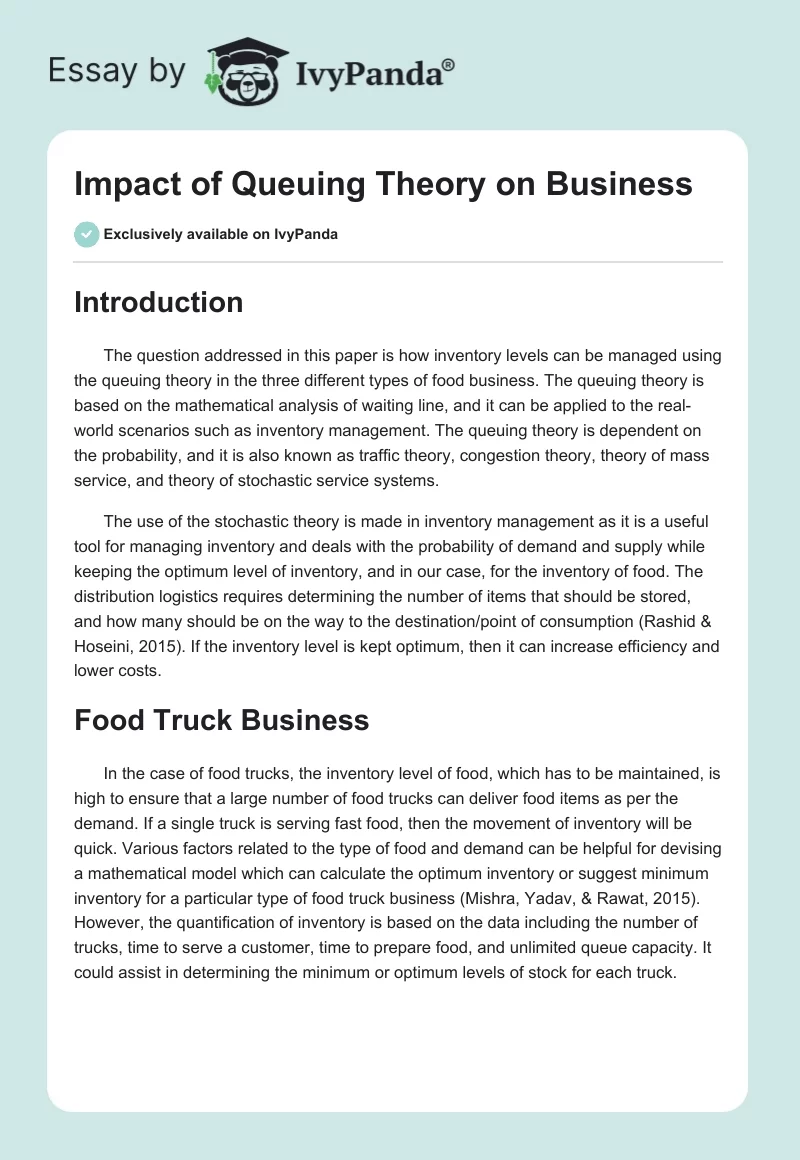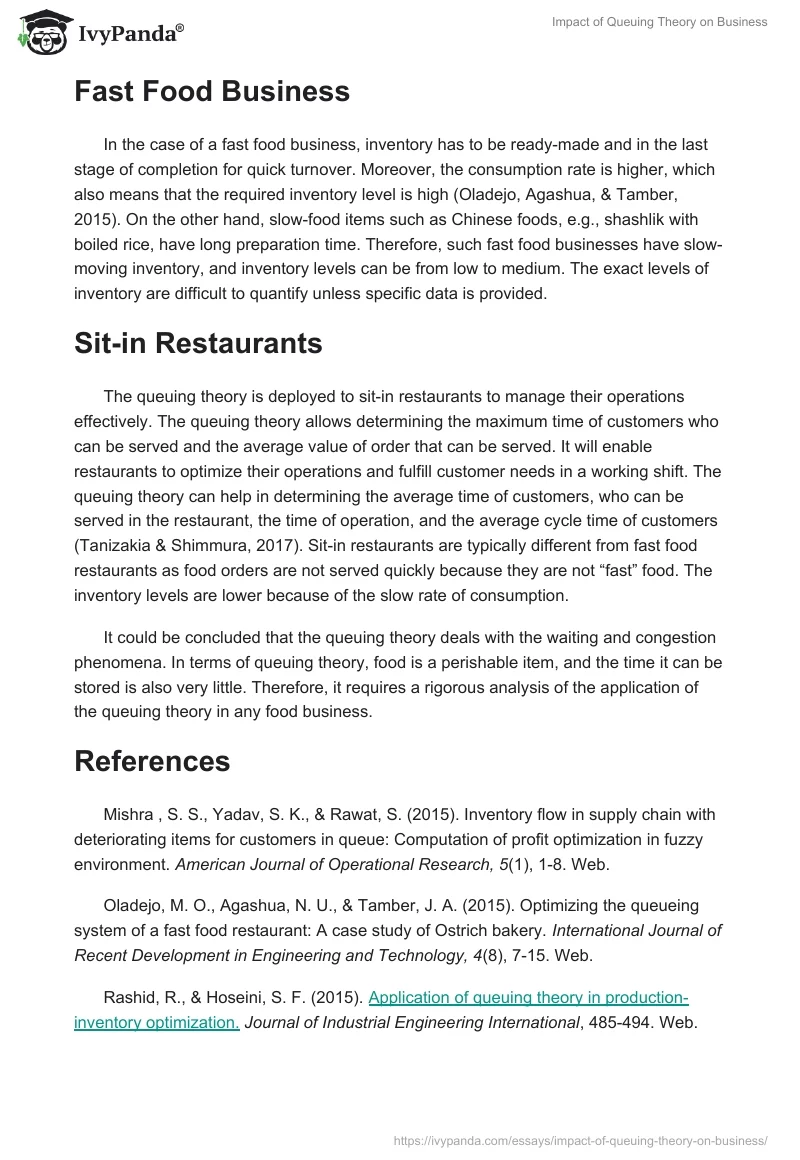Introduction
The question addressed in this paper is how inventory levels can be managed using the queuing theory in the three different types of food business. The queuing theory is based on the mathematical analysis of waiting line, and it can be applied to the real-world scenarios such as inventory management. The queuing theory is dependent on the probability, and it is also known as traffic theory, congestion theory, theory of mass service, and theory of stochastic service systems.
The use of the stochastic theory is made in inventory management as it is a useful tool for managing inventory and deals with the probability of demand and supply while keeping the optimum level of inventory, and in our case, for the inventory of food. The distribution logistics requires determining the number of items that should be stored, and how many should be on the way to the destination/point of consumption (Rashid & Hoseini, 2015). If the inventory level is kept optimum, then it can increase efficiency and lower costs.
Food Truck Business
In the case of food trucks, the inventory level of food, which has to be maintained, is high to ensure that a large number of food trucks can deliver food items as per the demand. If a single truck is serving fast food, then the movement of inventory will be quick. Various factors related to the type of food and demand can be helpful for devising a mathematical model which can calculate the optimum inventory or suggest minimum inventory for a particular type of food truck business (Mishra, Yadav, & Rawat, 2015). However, the quantification of inventory is based on the data including the number of trucks, time to serve a customer, time to prepare food, and unlimited queue capacity. It could assist in determining the minimum or optimum levels of stock for each truck.
Fast Food Business
In the case of a fast food business, inventory has to be ready-made and in the last stage of completion for quick turnover. Moreover, the consumption rate is higher, which also means that the required inventory level is high (Oladejo, Agashua, & Tamber, 2015). On the other hand, slow-food items such as Chinese foods, e.g., shashlik with boiled rice, have long preparation time. Therefore, such fast food businesses have slow-moving inventory, and inventory levels can be from low to medium. The exact levels of inventory are difficult to quantify unless specific data is provided.
Sit-in Restaurants
The queuing theory is deployed to sit-in restaurants to manage their operations effectively. The queuing theory allows determining the maximum time of customers who can be served and the average value of order that can be served. It will enable restaurants to optimize their operations and fulfill customer needs in a working shift. The queuing theory can help in determining the average time of customers, who can be served in the restaurant, the time of operation, and the average cycle time of customers (Tanizakia & Shimmura, 2017). Sit-in restaurants are typically different from fast food restaurants as food orders are not served quickly because they are not “fast” food. The inventory levels are lower because of the slow rate of consumption.
It could be concluded that the queuing theory deals with the waiting and congestion phenomena. In terms of queuing theory, food is a perishable item, and the time it can be stored is also very little. Therefore, it requires a rigorous analysis of the application of the queuing theory in any food business.
References
Mishra , S. S., Yadav, S. K., & Rawat, S. (2015). Inventory flow in supply chain with deteriorating items for customers in queue: Computation of profit optimization in fuzzy environment. American Journal of Operational Research, 5(1), 1-8. Web.
Oladejo, M. O., Agashua, N. U., & Tamber, J. A. (2015). Optimizing the queueing system of a fast food restaurant: A case study of Ostrich bakery. International Journal of Recent Development in Engineering and Technology, 4(8), 7-15. Web.
Rashid, R., & Hoseini, S. F. (2015). Application of queuing theory in production-inventory optimization.Journal of Industrial Engineering International, 485-494. Web.
Tanizakia, T., & Shimmura, T. (2017). Modeling and analysis method of restaurant service process.Procedia CIRP, 62, 84-89. Web.


